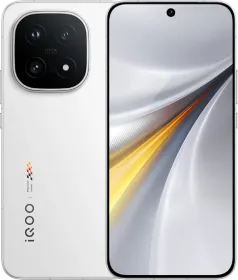After months of leaks, teasers, and controversies, the OnePlus 15 has finally landed in India, and it’s one of the brand’s most interesting flagships yet. This began long before launch: the removal of the Hasselblad partnership, the change in camera hardware, and a pricing bump that puts it closer to ultra-flagship territory.

Still, there’s a lot that makes the OnePlus 15 a good flagship. A 1.5K 165 Hz LTPO display, the Snapdragon 8 Elite Gen 5, a massive 7,300 mAh battery, 120W charging, and a brand-new computational system called DetailMax Engine.
So what exactly has OnePlus traded off to get here? And does the OnePlus 15 still feel like the same brand that once balanced performance and cameras? I’ve been using the 12 GB + 256 GB Ultra Violet variant for several weeks now, and here’s my review of the OnePlus 15.
OnePlus 15 Price & Availability
The OnePlus 15, in India, starts at ₹72,999 for the 12 GB + 256 GB variant and ₹79,999 for the 16 GB + 512 GB configuration. At launch, there’s a ₹4,000 bank offer and a Nord Buds 3 bundle free with pre-orders.
In the US, the OnePlus 15 starts at $899.99 for the 12 GB + 256 GB variant and $999.99 for the 16 GB + 512 GB configuration.
It’s worth pointing out that in China, the 15 is 500 yuan cheaper than the OnePlus 13, but here in India, it’s ₹3,000 more expensive than last year. That pricing gap feels odd, especially since Hasselblad branding is gone and the camera hardware has been downgraded.
The phone is available across Amazon, OnePlus.in, and offline OnePlus Experience Stores.
Pros
- Excellent 1.5K 165Hz LTPO display with great touch response
- Superb sustained gaming experience
- Excellent gyro response
- Long-lasting battery life
- Fast 120W wired + 50W wireless charging
- Great software experience with OxygenOS 16
- Loaded with useful AI features
- Autofocus selfie camera is good
- IP66 + IP68 + IP69 + IP69K durability
- Great video performance
- Great stereo speakers
Cons
- Smaller rear camera sensors than the OnePlus 13
- Aggressive AI at higher zooms beyond 10X and 20X
- Haptics weaker than OnePlus 13
- No 2K resolution
- Limited number of native 165 FPS-supported titles
OnePlus 15 Specifications
- Display: 6.78-inch LTPO AMOLED, 1.5K (2772 x 1272), 165Hz adaptive refresh rate (1–120Hz for system, 165Hz in gaming), HDR10+, ProXDR, 1800 nits HBM brightness, 450 PPI, Gorilla Glass Victus 2
- SoC: Snapdragon 8 Elite Gen 5 (2x 4.6 GHz Oryon Prime Core, 6x 3.63 GHz; Adreno 840 GPU, 4 nm)
- RAM: 12/16 GB LPDDR5X Ultra
- Storage: 256/512 GB UFS 4.1
- Main Camera: 50 MP Sony IMX906, 1/1.56-inch, f/1.8, 24mm, OIS, AF, 8K30, 4K30/60/120
- Ultra-wide Camera: 50 MP OmniVision OV50D, 1/2.88-inch, f/2.0, 16mm, AF, macro support, 4K30/60
- Telephoto Camera: 50 MP Samsung JN5, 1/2.75-inch, f/2.8, 3.5X optical zoom, 85mm, 30cm MFD, OIS, AF, 4K 30/60 FPS
- Front Camera: 32 MP Sony IMX709, 1/2.74-inch, f/2.4, 21mm, AF, 4K30/60
- Speakers: Stereo setup with dual speakers
- Battery and Charging: 7,300 mAh dual-cell, 120W SUPERVOOC, 55W PPS, 50W AirVOOC Wireless
- Build: Aluminum frame, Gorilla Glass Victus 2 front and back, IP66 + IP68 + IP69 + IP69K certified
- Connectivity: Wi-Fi 7, Bluetooth 6.0, NFC, USB 3.2 Gen 1 (Type-C), IR blaster, eSIM
- Biometrics: Under-display ultrasonic fingerprint, 2D face unlock
- Weight and Dimensions: 211g and 161.4 x 76.7 x 8.1 mm
OnePlus 15 Review: Unboxing
The box is classic OnePlus red, minimal and premium. Inside, you get:
- The OnePlus 15
- A 120W SUPERVOOC charger
- USB-A to USB-C cable
- Color-matched case
- SIM ejector tool and documentation

The inclusion of the charger is still a win. It’s something Samsung and Apple stopped doing long ago, and I appreciate that OnePlus still includes a complete package. The included case is also really nice.
OnePlus 15 Review: Design and Build
The first thing you notice about the Ultra Violet variant is how dynamic it looks. Under daylight, the color shifts between deep blue and soft purple. It’s very unlike the loud finishes we’ve seen lately. The matte AG glass keeps fingerprints away, and the dual-texture coating feels nice in the hand.

The frame is aluminum with a clean matte finish. OnePlus says the design follows the golden-ratio curve geometry, aligning the corners and camera island perfectly. Speaking of, the camera island is no longer circular, but more in line with what wes saw on the OnePlus 13s.

The OnePlus 15 weighs 211g and measures 8.1 mm thick. It is slightly thinner and wider than the 13. The edges are flatter now but they aren’t razor-sharp either. The slight curvature on the back panel makes it comfortable to hold. Still, I recommend using the case for added grip.
Build quality is easily flagship-grade. Both the front and back are protected by Gorilla Glass Victus 2, and the device comes with the most comprehensive protection rating yet: IP66 + IP68 + IP69 + IP69K. That means it can handle dust, submersion up to two meters for 30 minutes, and even high-pressure hot-water jets at 80°C.

The button placement is identical to past models, although the Alert Slider on the right has been replaced with the new Plus Key. The power key and the volume buttons are placed very high and could’ve been lower.
OnePlus 15 Review: Display

If there’s one thing OnePlus continues to focus on, it’s display tech. The OnePlus 15 comes with a 6.78-inch 1.5 K LTPO AMOLED panel. Yes, it’s a downgrade from the 2K panel on previous flagships, and while the difference isn’t really noticeable in daily use, it’s still a step down on paper. OnePlus says that, with the current technology, it’s not possible to do a 2K resolution with a 165Hz refresh rate.
Speaking of, the display supports an adaptive refresh rate from 1 Hz to 120Hz, and in certain games, it can go up to 165Hz. The panel includes ProXDR, HDR10+, and Dolby Vision. The HBM brightness is 1800 Nits, and I’ve had no issues with the visibility outdoors at all. The OnePlus 15 has one of the brightest displays I’ve used.
The bezels on the OnePlus 15 are unbelievably thin. It almost feels like you’re holding a sheet of glass. OnePlus claims they measure just 1.15 mm, and visually, that seems accurate.

Color calibration is well-tuned. It supports both sRGB and P3 color spaces, and you can switch between Natural, Vivid, and Standard profiles. I found the Natural profile to be better than the other two options. Of course, you can also change the colors manually using the color wheel.
Touch response on the OnePlus 15 is handled by a dedicated chip that allows an instant sampling rate of 3,200 Hz. It feels smooth while scrolling or playing games like COD Mobile or BGMI, where everything feels just instantaneous.

The phone is TÜV Rheinland Intelligent Eye Care 5.0 certified, with features like adaptive color temperature, Eye Comfort Reminders, and Reduce White Point. It can also go as low as 1 Nit. PWM dimming runs at 2,160 Hz, which helps reduce eye strain at lower brightness levels.
For streaming, HDR10+ support works on Netflix and Prime Video, and YouTube HDR playback runs without issues. Blacks appear deep and highlights are managed well. Games that support native 165 fps (Clash of Clans, Brawl Stars, Real Racing 3, Blood Strike, Standoff 2, CODM; BGMI with frame boost) run at higher frame rates, too.
However, there’s still no system-wide 165 Hz support. I was expecting that to happen, but that’s not the case right now. Hopefully, it arrives in a later update. OnePlus has also mentioned that more games will get native 165 fps and frame boost support soon.
OnePlus 15 Review: Speakers and Haptics

The stereo speakers are loud and rich, though slightly mid-heavy. Audio during gaming is powerful, too. These are symmetrical speakers, meaning the top and bottom speakers are the same unlike other smartphones.
The X-axis haptics deliver tactile feedback, making shooting and steering feel immersive during gaming. They are a downgrade from the OnePlus 13’s haptics but overall the experience is still one of the best in the market right now. The haptic integration is done really well across the UI, thanks to OxygenOS.
OnePlus 15 Review: Software

OxygenOS 16, based on Android 16, feels mature, smooth, and also comes with a ton of AI features plus non-AI features that are actually useful. The system-wide animations have been improved this year and the overall experience is more refined than ever before. OxygenOS 16 is easily one of the best software experiences.

OnePlus AI

A big talking point this year is OnePlus AI. Plus Mind, first introduced with the OnePlus 13s has been improved a lot. This works like a digital scrapbook that remembers everything you save.
You can press the Plus key or use a three-finger swipe to capture anything on-screen like articles, chats, screenshots, or posters. Everything gets stored in Mind Space, where it’s neatly organized and easy to search by context.
It also now connects with Google Gemini, allowing you to ask things like, “Show my saved restaurants in Mumbai that are open late.” Gemini then checks your saved content along with real-time internet data to give accurate results.

Some new AI features have also been introduced. Like AI Recorder, which transcribes and summarizes meetings while recognizing individual voices in real time.

AI Portrait Glow or AI Relight, which improves lighting in portrait shots taken under poor lighting. You can adjust the intensity as well.
AI Scan, which converts documents, notes, or whiteboards into clear, distortion-free PDFs or images (it can erase shadows too).

And AI PlayLab, that gives access to test experimental tools such as YumSee for menu translation and Party Up for creating short videos.

Of course, you also have the other AI features like the AI Eraser, Reflection Eraser, AI 4K Clarity, AI Unblur, AI Summary, AI Speak, AI VoiceScribe, AI Perfect Shot, AI Recompose, AI Translate app, AI Notes, now with mind maps and better integration, AI Writer for social media and messages, and more. I think OnePlus has the best suite of AI features after Samsung.
According to OnePlus, all of this operates through the Private Computing Cloud, meaning your data stays fully encrypted even while being processed.
Software Update Policy

OnePlus has promised 4 years of OS updates and 6 years of security patches, which is a year less than the upcoming iQOO 15. It would’ve been better if OnePlus matched iQOO’s 5-year OS and 7-year security support plan.
The OnePlus 15 also includes a Motion Cues feature designed to reduce car sickness, similar to Apple’s version. There are also eye comfort reminders, like a screen time alert and a blink reminder, that notify you when you’ve been staring at the screen too long.

Overall, the OnePlus 15, with OxygenOS 16 offers a solid and refined overall software experience.
ALSO READ: OxygenOS 16 Review: Complete List of All the New Features and Changes
OnePlus 15 Review: Biometrics

The OnePlus 15 uses an ultrasonic in-display fingerprint sensor, and it’s just as reliable as the one on the OnePlus 13. It’s fast, accurate, and now easier to set up, as you can simply roll your finger over the sensor instead of tapping repeatedly. Face unlock is also available and works fast under most lighting conditions. It’s not as secure as the fingerprint scanner, but it’s there.
OnePlus 15 Review: Performance

In my opinion, the OnePlus 15 isn’t just another flagship running the Snapdragon 8 Elite Gen 5. It’s a demonstration of how much tuning can matter. I’ve used a few other devices on the same platform and also the 9500, but this one is consistently smooth even under load.
It’s powered by Qualcomm’s Snapdragon 8 Elite Gen 5 built on the 4 nm process, featuring two prime Oryon cores clocked at 4.6 GHz, and six performance cores at 3.63 GHz. Paired with Adreno 840 GPU, 12 GB LPDDR5X Ultra RAM, and UFS 4.1 storage, this thing flies through anything you throw at it.
Benchmarks (12GB + 256GB):
| Benchmark Test | Score / Result |
| AnTuTu v11.0.4 | 3,747,971 |
| AnTuTu Storage Test | 156,134; Sequential Read: 3903 MB/s; Sequential Write: 3536 MB/s |
| Geekbench 6 (CPU) | Single-Core: 3536; Multi-Core: 10,595 |
| Geekbench 6 (GPU – OpenCL) | 24,978 |
| Geekbench 6 (GPU – Vulkan) | 28,025 |
| 3DMark Wild Life Extreme Test | Score: 6,683; Average FPS: 40.02 |
| 3DMark Wild Life Extreme Stress Test | Best Loop: 6164; Lowest Loop: 5562; Stability: 90.2% |
Synthetic numbers aside, it’s the real-world optimization that impressed me most. The OnePlus CPU Scheduler intelligently balances load, so even after 45 minutes of gaming, frame rates remain stable. The system dynamically allocates resources rather than brute-forcing the CPU. That’s why you don’t see sudden frame drops or overheating.
Thermals

The 360 Cryo-Velocity Cooling System is no gimmick. It uses a 5,731 mm² 3D vapor chamber, aerogel insulation on the display, and white graphite on the backplate for uniform heat dissipation. The display doesn’t drop any kind of brightness even when using under direct sunlight.
During long sessions of Genshin Impact and 165FPS BGMI/CODM, the phone hit around 42°C, which is cool considering the sustained frame rates. The screen stays surprisingly comfortable to touch, which is a big deal for gamers.
Gaming Experience

This is, without a doubt, the best gaming phone I’ve used so far. OnePlus went all in on responsiveness this time, adding not one, but three dedicated hardware components to enhance gaming: the touch chip, Wi-Fi chip, and the new UAV-grade gyroscope rated at ±4000 DPS.
That gyro is ridiculously precise. In shooters like CODM and BGMI, small wrist adjustments feel exact with no drift or delay. It’s like using a motion controller.
Native 165 FPS titles include:
- Clash of Clans
- Brawl Stars
- Real Racing 3
- Standoff 2
- Blood Strike
- COD Mobile
For BGMI, the phone supports frame boost to 165 FPS, and the difference is immediately noticeable versus 120 FPS. However, I do wish that more games were supported for 165 FPS.
In Genshin Impact, I consistently got 60 FPS, and in Wuthering Waves the game ran at 60 FPS with frame boost enabled. Even after extended play, there were no stutters, frame drop issues, or overheating at all.

Network stability is fantastic thanks to the dedicated Wi-Fi chip, which offers 50% faster throughput and longer range. I walked two rooms away from my router, and ping stayed below 10 ms.
This is a gamer’s phone through and through. If you want the best gaming experience this year, the OnePlus 15 is it.
OnePlus 15 Review: Cameras

Now, onto one of the most talked-about aspects of the OnePlus 15 – the cameras.
| Sensor | Aperture | Focal Length | |
| Main | Sony IMX906, 1/1.56-inch | f/1.8 | 1X, 24mm, OIS, AF |
| Ultra-wide | OV50D, 1/2.88-inch | f/2.0 | 0.6X, 16mm, OIS, AF |
| Telephoto | Samsung JN5, 1/2.75-inch | f/2.8 | 3.5X, 85mm, OIS, AF |
| Front | Sony IMX709, 1/2.74-inch | f/2.4 | 21mm, AF, RGBW |
The OnePlus 15 moves away from its previous flagship camera setup and brings downgraded hardware this year. The main sensor is now the smaller Sony IMX906, the ultra-wide uses a smaller OV50D sensor, and the telephoto switches to a compact Samsung JN5 with a narrower aperture and reduced light-gathering ability.









Except for the front camera, which finally gets autofocus, all three rear sensors are physically weaker compared to the OnePlus 13.






To compensate for this, OnePlus relies on its new DetailMax Engine that processes multiple frames and outputs 26 MP images across all lenses. This does help maintain sharpness and produce good images in daylight, but the limits of the smaller sensors show up in low light, and at higher zoom levels.











Video
The video has been greatly improved this year, though. The OnePlus 15 records clean, stable video with 4K120 on the main sensor and 4K60 on the rest of the cameras, along with Dolby Vision HDR. Real-time tone mapping keeps exposure and white balance consistent, stabilization works well on all lenses.

You can also now switch between front and rear cameras even during 4K60 recording. Portrait Video now supports 4K30, and Pro Video adds O-Log with live LUT previews. Despite the downgraded hardware, video performance stays strong.
Overall, the OnePlus 15 delivers surprisingly strong camera performance. Most users will see this as an upgrade over the OnePlus 13, but I still don’t understand the inferior camera hardware. OnePlus could’ve given us the same great DetailMax processing with better hardware, but they decided not to.
For the full breakdown, sample results, and lens-by-lens analysis, check out our dedicated OnePlus 15 camera review.
OnePlus 15 Review: Battery Life and Charging

The 7,300 mAh Silicon NanoStack battery is the largest in any flagship right now (at least at the time of writing), and it performs well. With my mixed usage (social media, camera, gaming, browsing, and streaming), I consistently hit 11 to 12 hours of screen-on time, and sometimes even more on Wi-Fi.
Charging is equally impressive. The included 120W SUPERVOOC charger takes the phone from 0 to 100% in around 40 to 45 minutes. From 0 to 60% takes roughly 15 minutes.

There’s also 50W AIRVOOC wireless charging and reverse wireless charging up to 4.5 W. The phone supports Bypass Charging, which routes power directly from the charger during gaming to reduce heat and extend battery health.
Even better, OnePlus promises 80% battery health after 4 years, thanks to the 15% silicon-rich anode composition. It’s also said to work reliably in cold weather, functioning down to -20°C.
Review Verdict: Should You Buy the OnePlus 15?
After spending days with the OnePlus 15, one thing’s clear, it’s the most performance-focused phone OnePlus has made so far. The camera sensors have shrunk, and the pricing is higher than expected. It handles gaming well, the display feels smooth, the battery lasts long, and the software includes some new AI features.
So, should you consider it for ₹73,000? If you really need that gaming performance, then you can consider it after discounts. However, if you want the absolute best value, I would still recommend grabbing the OnePlus 13 or waiting for the upcoming flagships.

Smartprix ⭐ Rating: 8.7/10
- Design and Build: 8.7/10
- Display: 8.5/10
- Speakers: 8.7/10
- Software: 8.7/10
- Haptics: 8/10
- Biometrics: 9/10
- Performance: 9.2/10
- Cameras: 7.8/10
- Battery Life & Charging: 9.5/10
First reviewed in November 2025.




















































